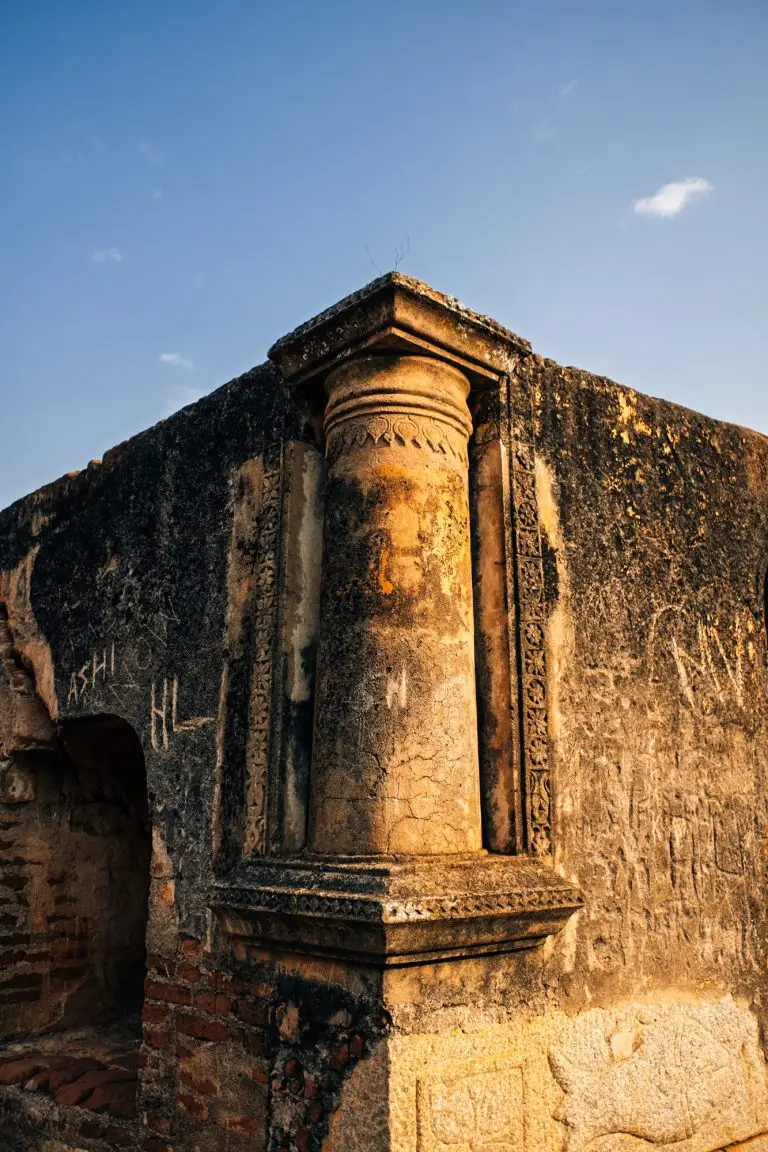After a 2hr long session about the history of Bengaluru and its inscription stones, Udaya asked all of us ‘So, how old is Bengaluru’. And as most of us were sure that the people who were not a part of this talk to come back with an obvious answer of 15th century.
Inscription stones of Bangalore is a citizen project to raise awareness and protect the ancient inscriptions in the city of Bengaluru. Every month it organizes a talk around one or many of the inscriptions tones which are un-earthed in various parts of Bengaluru. Inscription stones or Shila Shaasana as one can call it are original historical documentation of people, culture, and tradition from the times gone by. There are various kinds of Inscription Stones available and can be categorized but not limited to veeragallu which is typically created to highlight a martyr, or sometimes a simple inscription stone that talks about donating or gifting of land by a person for a specific purpose ( eg temples ).

On this day which is 26th of January 2020, it was time to meet at the Hebbal Kittayya Inscription stone location which is now safely housed inside a traditional Ganga style mandapa which is designed and built by the help of various volunteers either in the form of funding or even up to the extent of the architect who specifically studied the Ganga style of architecture and ensured an exact replica is done here for Kittayya who now we can proudly call as the oldest citizen of modern-day Bengaluru.

The talk was being led by Udayakumar who is one of the main people behind the initiative and more than 25 folks from all walks of life and across different age groups had come down to listen to the history of the place and the people who were a part of the place.

What makes this meetup or the place or the inscription stone more special is the fact that this stone was discovered in June of 2018 at Hebbal and incidentally it has Bangalore’s oldest writing from 750AD. This deciphering was done by Dr. PV Krishnamurthy in September of 2018. spread across 5 lines this 750AD inscription talks about the reason behind inscription which is primarily for Kittayya who lost his life fighting for his city/town Perbolalanaadu 30 ( which is now Hebbal ) against Rattavadi attack during the time of Sri Purusha a Ganga dynasty king who ruled between 726 and 788 AD. The stone does also has a pictorial representation of Kittayya pierced in arrows, fighting against a warrior who is on a horse using his bow and arrow.

Uday goes on to say that how bad the situation was when they first discovered the inscription stone way back in 2018 and how things would have ended up in a mess if the localities had not raised the concern against the location getting white topping and thereby resulting in a permanent loss of this iconic discovery. This then leads to a series of events and actions and a successful citizen-driven initiative where a lot of people joined hands to not only save this iconic place but also create a mandapa and make it a part of the festivity and celebration as of January 2020. On January 15th, 2020 when the mandapa was formally inaugurated the place saw thousands and of localities and also from diff parts of the city come here and celebrate the harvesting festival Sankranthi.

Udaya then continued his talk about the inscription stones of Bengaluru but pointing us at small Durga temple which is few feet away from the Hebbal Kittayya mandapa, which apparently has inscription from a more recent times and thus adds another special touch to this place Hebbal by having the oldest and recent inscription stones around the same place. He even highlighted the presence of around 15 such inscription stones around the Hebbal region which has references to names like Hebbal, Jakkur, Byrati, etc dating back to anywhere like 750AD to 1300AD much before what the current generation Bangalore dates the origin of Bangalore too. And there are inscription stones which dates back to 571AD from Begur making it currently the oldest known locality in Bengaluru and also Kittayya the oldest documented citizen of the present-day Bengaluru.

The conversations didn’t just stop about Kittayya and the inscription stone at Hebbal but Udaya went on to talk about the reference to the word BENGALURU in one of the inscription stones found in 900AD inscription stone found in Beguru and thereby one can confidently tell that the city is nothing less than 1100yrs old or probably even more which only time and discovery of more such inscription stones could tell.
For current generation folks who get to accept and adapt to whatever is given in the school textbooks, discoveries like these are eye-openers and talk about the rich history and legacy of places that we live in and the people who were a part of such historic land. We definitely have to thanks initiatives by people like Udayakumar and many more such people who get involved in such activities and help unearth and most importantly protect and thereby sharing such treasures to the future generations and making them proud of it.
For more details on Inscription Stones of Bangalore please follow them on the social media below
Facebook: www.facebook.com/groups/inscriptionstones
Twitter: @inscriptionblr


BL Rice’s Epigraphia Carnatica contains a list of inscription stones. The book is available on archive.org.
Thank you very much for the wonderful writeup !!!